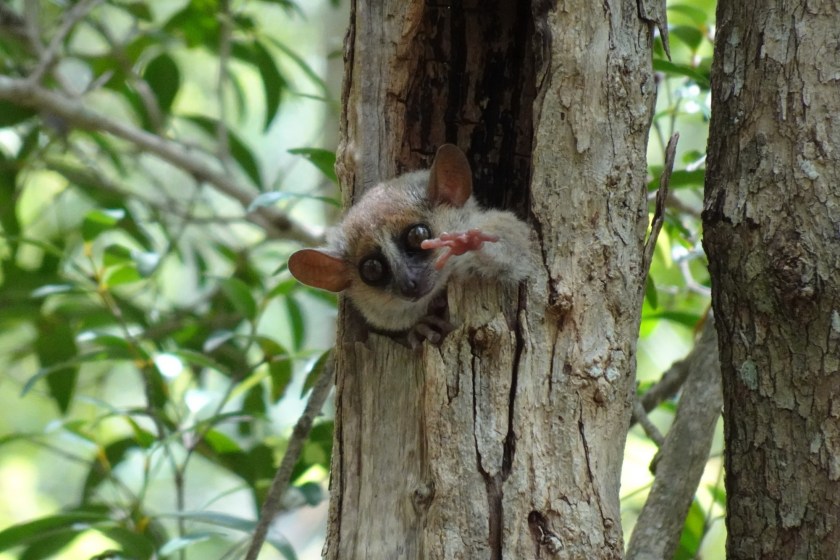There are many highfalutin reasons why we love to travel, including experiencing nature and cultures that haven’t (yet) been wiped out or turned into a zoo-like setting for gawking tourists. Who’d want to see that? Well…sometimes us :-) The small island of Nosy Komba is a popular day trip from the resorts on Nosy Be. You get there on a small motor boat, landing at a cute beach town that seems to still have a small fishing industry but is mostly geared to tourists. Local guides lead you into the jungle to see the “wild” life (more on that in a minute) but not before passing dozens of gift shops along the way. Much of the offerings were good quality local handicrafts like embroideries, carvings, paintings and baskets.

Once you run the gauntlet of beckoning shopkeepers, you have your first wildlife sighting – a group of guys with a selfie-ready chameleon. Ethically dubious but it is fun see a chameleon so close up and get an opportunity to touch one. Turns out their stubby little fingers have sharp claws! Tip from Laurel to any chameleon fanciers: don’t put them on your bare skin. Tip from Brian: they don’t hurt at all when you put them on your hat, but they do get antsy after a few seconds and leap off.

Then the guide pulls out a boa constrictor you can wrap around your neck and a shy baby turtle. Luckily not at the same time. We briefly played with both and then moved on to see the promised headline act – lemurs. Our guide reaches into his bag and pulls out…bananas! Thankfully, the lemurs are not in the bag and are roaming free in the forest. But they know that if they hang around the trail, some nice people will show up with bananas. The guide smears banana in your hand and you wait while the lemurs hop from tree to tree, edging closer to your outstretched hand. These lemurs were not as tame as the rescued pet lemurs that we met on Lemur Island in 2011, still being a little leery of these banana-handed tourists. Eventually they take the bait and jump on your arm to eat the banana, the guide all the while trying to smear on more banana to keep them interested. The whole thing was definitely unseemly but a lot of fun.

After our lemur-high wore off, we walked back down the trail and checked out the shops. We bought a colorful straw beach bag and filled it with tropical fruit, conveniently using the last pennies of our Madagascar currency. So long Madagascar!


































































